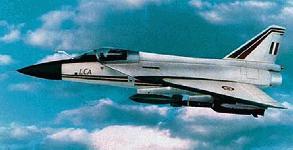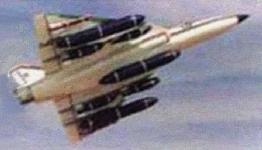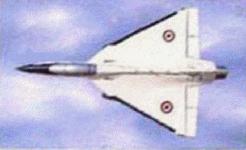FAS |
Military |
DOD 101 |
Systems |
Aircraft |
ROW ||||
Index |
Search |
Join FAS




Light Combat Aircraft (LCA)
The Indian Light Combat Aircraft (LCA) is the world's smallest, light weight, multi-role combat aircraft designed to meet the requirements of Indian Air Force as its frontline multi-mission single-seat tactical aircraft to replace the MiG-21 series of aircraft. The delta wing configuration , with no tailplanes or foreplanes, features a single vertical fin. The LCA is constructed of aluminium-lithium alloys, carbon-fibre composites, and titanium. LCA integrates modern design concepts and the state-of-art technologies such as relaxed static stability, flyby-wire Flight Control System, Advanced Digital Cockpit, Multi-Mode Radar, Integrated Digital Avionics System, Advanced Composite Material Structures and a Flat Rated Engine. The LCA design has been configured to match the demands of modern combat scenario such as speed, acceleration, maneuverability and agility. Short takeoff and landing, excellent flight performance, safety, reliability and maintainability, are salient features of LCA design. The LCA integrates modern design concepts like static instability, digital fly-by-wire flight control system, integrated avionics, glass cockpit, primary composite structure, multi-mode radar, microprocessor based utility and brake management systems.The avionics system enhances the role of Light Combat Aircraft as an effective weapon platform. The glass cockpit and hands on throttle and stick (HOTAS) controls reduce pilot workload. Accurate navigation and weapon aiming information on the head up display helps the pilot achieve his mission effectively. The multifunction displays provide information on engine, hydraulics, electrical, flight control and environmental control system on a need-to-know basis along with basic flight and tactical information. Dual redundant display processors (DP) generate computer-generated imagery on these displays. The pilot interacts with the complex avionics systems through a simple multifunction keyboard, and function and sensor selection panels. A state-of-the-art multi-mode radar (MMR), laser designator pod (LDP), forward looking infra-red (FLIR) and other opto-electronic sensors provide accurate target information to enhance kill probabilities. A ring laser gyro (RLG)-based inertial navigation system (INS), provides accurate navigation guidance to the pilot. An advanced electronic warfare (EW) suite enhances the aircraft survivability during deep penetration and combat. Secure and jam-resistant communication systems, such as IFF, VHF/UHF and air-to-air/air-to-ground data link are provided as a part of the avionics suite. All these systems are integrated on three 1553B buses by a centralised 32-bit mission computer (MC) with high throughput which performs weapon computations and flight management, and reconfiguration/redundancy management. Reversionary mission functions are provided by a control and coding unit (CCU). Most of these subsystems have been developed indigenously.
The digital FBW system of the LCA is built around a quadruplex redundant architecture to give it a fail op-fail op-fail safe capability. It employs a powerful digital flight control computer (DFCC) comprising four computing channels, each powered by an independent power supply and all housed in a single line replaceable unit (LRU). The system is designed to meet a probability of loss of control of better than 1x10-7 per flight hour. The DFCC channels are built around 32-bit microprocessors and use a safe subset of Ada language for the implementation of software. The DFCC receives signals from quad rate, acceleration sensors, pilot control stick, rudder pedal, triplex air data system, dual air flow angle sensors, etc. The DFCC channels excite and control the elevon, rudder and leading edge slat hydraulic actuators. The computer interfaces with pilot display elements like multifunction displays through MIL-STD-1553B avionics bus and RS 422 serial link. The digital FBW system of the LCA is built around a quadruplex redundant architecture to give it a fail op-fail op-fail safe capability. It employs a powerful digital flight control computer (DFCC) comprising four computing channels, each powered by an independent power supply and all housed in a single line replaceable unit (LRU). The system is designed to meet a probability of loss of control of better than 1x107 per flight hour. The DFCC channels are built around 32-bit microprocessors and use a safe subset of Ada language for the implementation of software. The DFCC receives signals from quad rate, acceleration sensors, pilot control stick, rudder pedal, triplex air data system, dual air flow angle sensors, etc. The DFCC channels excite and control the elevon, rudder and leading edge slat hydraulic actuators. The computer interfaces with pilot display elements like multifunction displays through MIL-STD-1553B avionics bus and RS 422 serial link.
Multi-mode radar (MMR), the primary mission sensor of the LCA in its air defence role, will be a key determinant of the operational effectiveness of the fighter. This is an X-band, pulse Doppler radar with air-to-air, air-to-ground and air-to-sea modes. Its track-while-scan capability caters to radar functions under multiple target environment. The antenna is a light weight (<5 kg), low profile slotted waveguide array with a multilayer feed network for broad band operation. The salient technical features are: two plane monopulse signals, low side lobe levels and integrated IFF, and GUARD and BITE channels. The heart of MMR is the signal processor, which is built around VLSI-ASICs and i960 processors to meet the functional needs of MMR in different modes of its operation. Its role is to process the radar receiver output, detect and locate targets, create ground map, and provide contour map when selected. Post-detection processor resolves range and Doppler ambiguities and forms plots for subsequent data processor. The special feature of signal processor is its real-time configurability to adapt to requirements depending on selected mode of operation.
Seven weapon stations provided on LCA offer flexibility in the choice of weapons LCA can carry in various mission roles. Provision of drop tanks and inflight refueling probe ensure extended range and flight endurance of demanding missions. Provisions for the growth of hardware and software in the avionics and flight control system, available in LCA, ensure to maintain its effectiveness and advantages as a frontline fighter throughout its service life. For maintenance the aircraft has more than five hundred Line Replaceable Units (LRSs), each tested for performance and capability to meet the severe operational conditions to be encountered. Hindustan Aeronautics Limited (HAL) is the Principal Partner in the design and fabrication of LCA and its integration leading to flight testing. The LCA has been designed and developed by a consortium of five aircraft research, design, production and product support organizations pooled by the Bangalore-based Aeronautical Development Agency (ADA), under Department of Defense Research and Development Organization (DRDO). Various international aircraft and system manufacturers are also participating in the program with supply of specific equipment, design consultancy and support. For example, GE Aircraft Engines provides the propulsion. The first prototype of LCA rolled out on 17 November 1995. Two aircraft technology demonstrators are powered by single GE F404/F2J3 augmented turbofan engines. Regular flights with the state-of-the-art "Kaveri" engine, being developed by the Gas Turbine Research Establishment (GTRE) in Bangalore, are planned by 2002, although by mid-1999 the Kaveri engine had yet to achieve the required thrust-to-weight ratio. The LCA is India's second attempt at an indigenous jet fighter design, following the somewhat unsatisfactory HF-24 Marut Ground Attack Fighter built in limited numbers by Hindustan Aeronautics Limited in the 1950s. Conceived in 1983, the LCA will serve as the Indian air force's frontline tactical plane through the year 2020. The LCA will go into service in the 2003-2005 timeframe.Following India's nuclear weapons tests in early 1998, the United States placed an embargo on the sale of General Electric 404 jet engines which are to power the LCA. The US also denied the fly-by-wire system for the aircraft sold by the US firm Lockheed-Martin. As of June 1998 the first flight of the LCA had been delayed due to systems integration tests. The first flight awaits completion of the Digital Flight Control Systems, being developed by the Aeronautical Development Establishment (ADE).
Specifications | |
| Wing Span | 8.20 m |
| Length | 13.20 m |
| Empty Weight | 5500 kg |
| Engine |
Prototype - GE F404-F2J3 turbofan rated at 18,097 lbst Production - Kaveri GTX-35VS turbofan rated at 20,200 lbst |
| Fuel Capacity |
Internal fuel capacity - 3000 liters Centerline and the two-inner hardpoints under each wing can carry five 800 liters fuel tanks also has an in-flight refuelling probe |
| Maximum Range | ? |
| Maximum Speed | Mach 1.7 |
| Service Ceiling | 50,000 feet. |
| G Limits | +9/-3.5 |
| Armament |
|
| Maximum External Stores Load | 4000kg (8818 lbs.) |
| Self Defence | RWR system, jammer and chaff & flare dispensers. |



Sources and Resources
- LCA UPDATE By Hormuz Mama - ( Flight International, 4-10 November 1998)
FAS |
Military |
DOD 101 |
Systems |
Aircraft |
ROW ||||
Index |
Search |
Join FAS
http://www.fas.org/man/dod-101/sys/ac/row/lca.htm
Maintained by Robert Sherman
Originally created by John Pike
Updated Saturday, December 11, 1999 2:51:47 PM